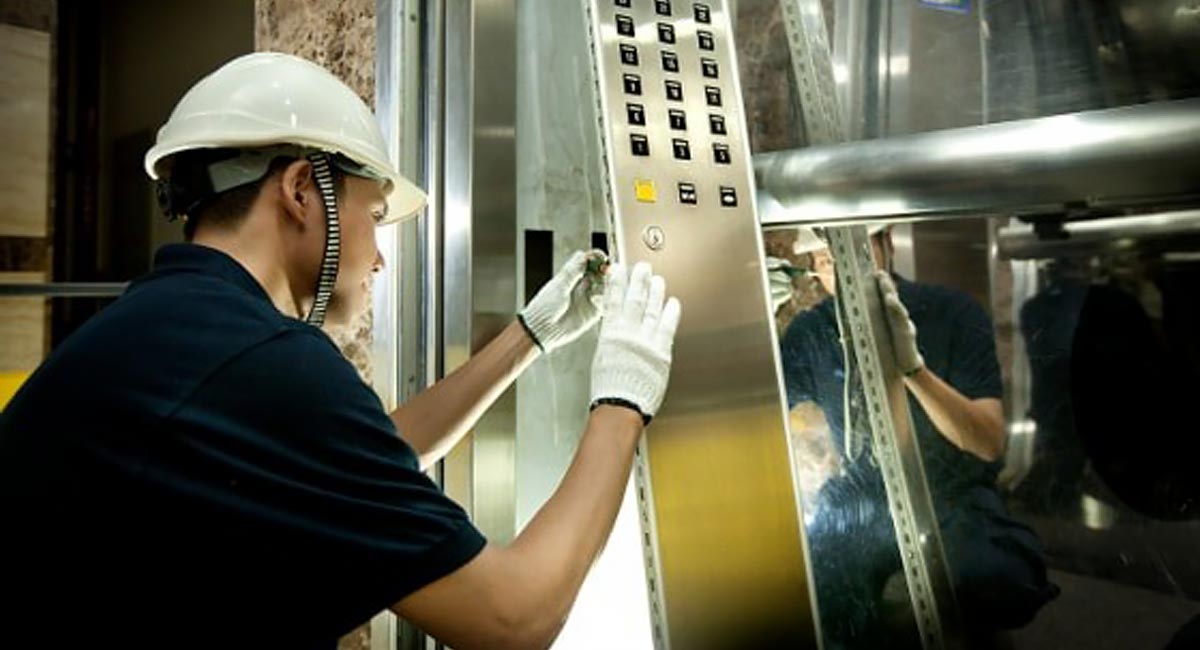Comprehensive Guide to Lift Equipments and Their Maintenance
Navigating the intricate globe of elevator systems and their maintenance is a job that requires precision and expertise. From the different sorts of lift systems in operation to the precise adherence to safety and security guidelines, the upkeep of these vertical transport gadgets is a complex venture. As buildings skyrocket higher and modern technology developments, the need for an extensive understanding of elevator systems comes to be progressively crucial. Join us as we unwind the complexities of lift maintenance, checking out usual problems, finest practices, and cutting-edge modern technologies that shape the modern-day landscape of upright transportation.
Sorts Of Elevator Solutions
The most common kinds include hydraulic elevators, grip lifts, machine-room-less lifts, and vacuum cleaner lifts. Hydraulic lifts are excellent for low-rise structures and utilize a hydraulic piston to move the elevator cars and truck. Machine-room-less lifts are a space-saving option as they do not call for a different maker area for the elevator machinery.
Each type of elevator system has its very own benefits and negative aspects, making it crucial for structure proprietors and designers to meticulously consider their certain demands prior to choosing one of the most appropriate choice. Elements such as building height, space schedule, power performance, and budget plan constraints all play a significant role in establishing the ideal elevator system for a particular structure.
Typical Upkeep Problems
Routine upkeep of lift systems is important to make certain smooth procedure and extend their life expectancy. In spite of routine upkeep, lift systems can still run into usual upkeep issues that need to be promptly dealt with to prevent disturbances in service. Regular examinations and proactive upkeep can help identify and deal with these common upkeep concerns before they escalate and affect the general performance of the elevator system.
Safety And Security Laws and Compliance
Following rigorous security policies and ensuring conformity with market standards are extremely important for preserving the operational stability of elevator systems. Elevators go through an extensive collection of security policies to guard travelers, maintenance workers, and the public. Regulative bodies such as the Occupational Safety and Wellness Administration (OSHA) in the USA and the European Lift Association (ELA) in Europe develop guidelines that cover numerous aspects of lift style, installment, maintenance, and procedure.
Conformity with these policies is not just a lawful demand yet also a moral responsibility for building owners and elevator maintenance business. Regular assessments, upkeep checks, and adherence to security procedures detailed in the guidelines are crucial to make certain the secure and reliable operation of elevator systems.
Best Practices for Maintenance

Building browse around this web-site proprietors ought to additionally consider spending in innovation upgrades to enhance the efficiency and safety and security of their elevator systems. By complying with these ideal methods, lift systems can operate efficiently and safely, providing reliable upright transportation for residents.

Advanced Technologies for Effectiveness
Carrying out innovative innovations in elevator systems can substantially improve operational efficiency and guest experience. lift maintenance services. Among the essential developments in elevator modern technology is the intro of destination control systems. These systems allow guests to input their wanted flooring before entering the lift, which then routes them to the most effective vehicle. By lessening unnecessary stops and maximizing travel courses, destination control systems decrease wait times and blockage in high-traffic buildings.
Additionally, the integration of smart sensing units and anticipating upkeep abilities has revolutionized elevator upkeep. These sensors can detect prospective concerns before they rise, enabling positive upkeep interventions and lessening downtime. Furthermore, the use of regenerative drives and energy-efficient elements helps in reducing power intake and operating expense in elevator systems.
In addition, the implementation of cloud-based tracking and remote diagnostics permits real-time tracking of elevator efficiency and prompt troubleshooting of any malfunctions. This aggressive method not only boosts system integrity but likewise improves the total user experience by guaranteeing nonstop and smooth elevator procedures.
Final Thought
Finally, recognizing the different kinds of lift systems, usual upkeep concerns, safety regulations, best upkeep methods, and advanced innovations for effectiveness is critical for making certain the smooth operation of elevators. By adhering to safety and security guidelines and carrying out ideal practices for upkeep, structure proprietors can lengthen the life-span of their lift systems and guarantee the security of passengers. It is vital check out here to remain updated on the most recent improvements in lift technology to enhance performance and reliability.
The most common types consist of hydraulic lifts, grip elevators, machine-room-less elevators, and vacuum cleaner lifts. Hydraulic elevators are optimal for low-rise buildings and utilize a hydraulic piston to relocate the lift car. Machine-room-less elevators are a space-saving choice as they do not require a separate machine area for the lift machinery. Regular examinations and aggressive maintenance can help recognize and solve these typical maintenance concerns before they escalate and impact the total performance of the lift system.

Comments on “Locate Expert Lift Maintenance Services: Best Lift Repair Companies Near Me”